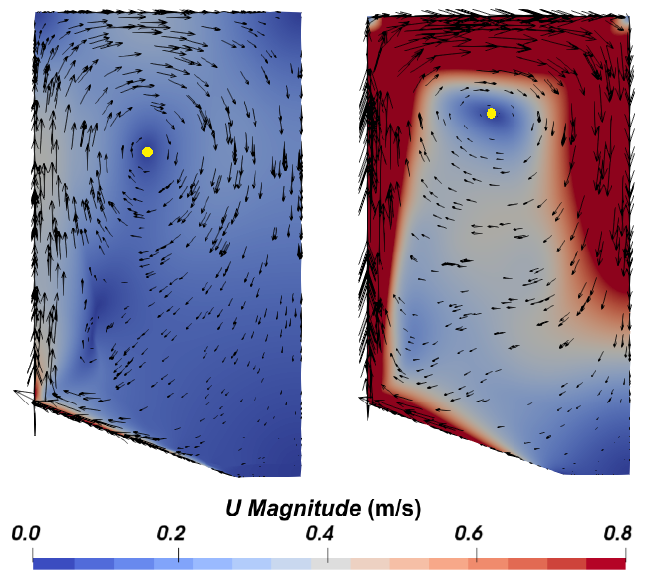Numerical Analysis of Thermally-Driven Winds in Mountain-Valley Regions
Sep 25, 2024
The student Rathan B. Athota defended his thesis co-supervised by Adeline de Villardi de Montlaur and José I. Rojas Gregorio on September 19 at Campus Nord. The thesis, entitled "Numerical analysis of thermally-driven winds in mountain-valley regions", presents a numerical study of the formation of thermally-driven winds on slopes of mountain-valley systems, using open source computational fluid dynamics software. These winds occur on the aforementioned slopes due to temperature gradients by the lower atmosphere’s diurnal heating-cooling cycle. The results of this research may be interesting for applications in wind energy.
This thesis aims at simulating thermally-driven winds in mountain-valley systems, using the open source computational fluid dynamics (CFD) software OpenFOAM. Thermal-driven winds occur in mountain-valley regions due to temperature gradients induced by the lower atmosphere’s diurnal heating-cooling cycle. The contemporary energy market is particularly interested in thermal-driven winds since they exhibit greater regularity and periodicity than synoptic winds and thus can be more predictable.
In the first phase of this research, the Reynolds Averaged Navier-Stokes k–ε turbulence model is validated on a 3D geometry by comparing its results to large-eddy simulations described in the literature. Then, a computational model of an idealised 2D mountain-valley configuration is created to mimic thermally-driven winds.
In this work, the most suitable top surface boundary conditions (BC), field temperature, and pressure initial conditions (IC) are examined. A transient solver is used to address the buoyant, turbulent flow of incompressible fluids. In contrast to traditional mechanisms of convection of fluid flows associated with pressure gradients, buoyancy is the driving force of convection of the studied thermally-driven flows. In this work, temperature is linearly dependent on altitude, which is imposed as BC on the mountain slope, resulting in thermally-driven wind generation. The minimal computational domain height required to successfully replicate thermally-driven winds is also explored, as are the effects of altitude-dependent and altitude-independent IC on the results.
Finally, a wide range of numerical simulations allow to investigate the influence of various wall functions on modelling thermally-driven flows. To sum up, it is concluded that CFD models can replicate the challenging atmospheric boundary layer flows with sufficient accuracy, which can help in determining the most suitable wind turbines for specific sites in mountainous regions.

Share: